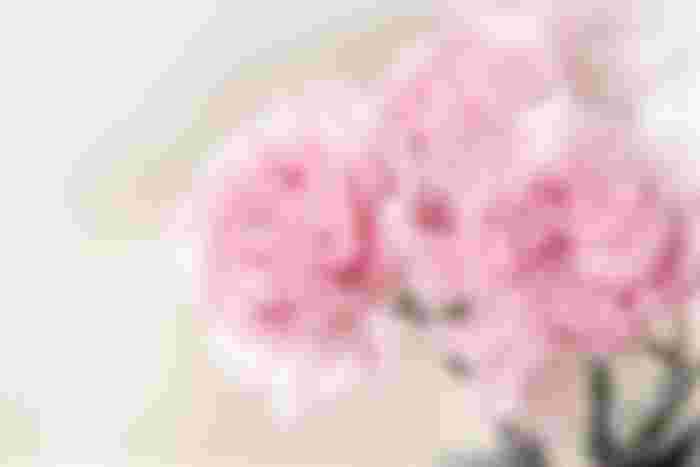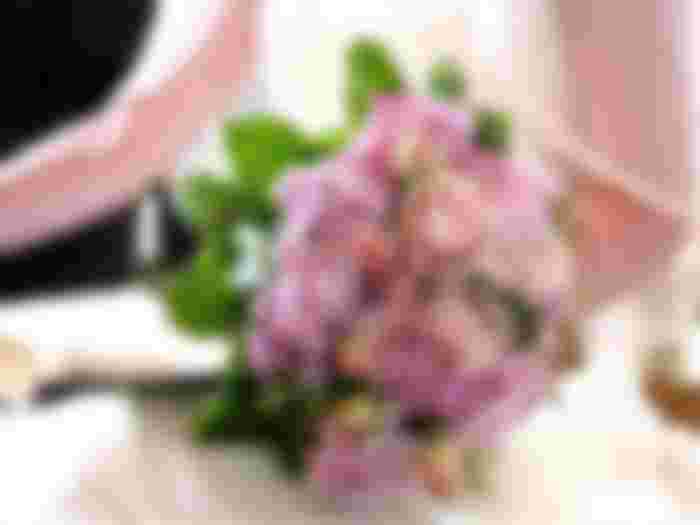What does each flower symbolize? Which flowers represent love, hope, healing, loss, and good luck? See the Almanac’s complete list of Flower Meanings and Plant Symbolism. Whether you are picking out a flower bouquet for a wedding, choosing a single flower for a loved one, or planting a garden, discover the secret language of flowers!
The History of Flower Meanings
The symbolic language of flowers has been recognized for centuries in many countries throughout Europe and Asia. They even play a large role in William Shakespeare’s works. Mythologies, folklore, sonnets, and plays of the ancient Greeks, Romans, Egyptians, and Chinese are peppered with flower and plant symbolism—and for good reason. Nearly every sentiment imaginable can be expressed with flowers. The orange blossom, for instance, means chastity, purity, and loveliness, while the red chrysanthemum means “I love you.”
Flowery Language of the Victorian Era
Learning the special symbolism of flowers became a popular pastime during the 1800s. Nearly all Victorian homes had, alongside the Bible, guidebooks for deciphering the “language,” although definitions shifted depending on the source.
In the Victorian era, flowers were primarily used to deliver messages that couldn’t be spoken aloud. In a sort of silent dialogue, flowers could be used to answer “yes” or “no” questions. A “yes” answer came in the form of flowers handed over with the right hand; if the left hand was used, the answer was “no.”
Plants could also express aversive feelings, such as the “conceit” of pomegranate or the “bitterness” of aloe. Similarly, if given a rose declaring “devotion” or an apple blossom showing “preference,” one might return to the suitor a yellow carnation to express “disdain.”
[bad iframe src]
How flowers were presented and in what condition were important. If the flowers were given upside down, then the idea being conveyed was the opposite of what was traditionally meant. How the ribbon was tied said something, too: Tied to the left, the flowers’ symbolism applied to the giver, whereas tied to the right, the sentiment was in reference to the recipient. And, of course, a wilted bouquet delivered an obvious message!
More examples of plants and their associated human qualities during the Victorian era include bluebells and kindness, peonies and bashfulness, rosemary and remembrance, and tulipsand passion. The meanings and traditions associated with flowers have certainly changed over time, and different cultures assign varying ideas to the same species, but the fascination with “perfumed words” persists just the same.
What Does Each Flower Symbolize?
See our list below for symbolic meanings of herbs, flowers, and other plants. (Please note: There are many meanings for flowers over the centuries; our chart below reflects mainly Victorian symbolism.)
Click on linked plant names for a photo and growing guide.
Symbolic Meanings of Herbs, Flowers and Other PlantsAbatinaFicklenessAcanthusThe fine art, artificeAloeAffection, also griefAmaryllisPrideAnemoneForsaken, sicknessAngelicaInspirationApple blossomPreferenceArborvitaeUnchanging friendshipAsterSymbol of Love, DaintinessBachelor’s buttonSingle blessednessSweet BasilGood wishesBay treeGloryBegoniaBeware, dark thoughtsBelledonnaSilenceBittersweetTruthBlack-eyed SusanJusticeBluebellHumility, constancyBorageBluntness, directnessButterfly weedLet me goCamellia, pinkLonging For YouCamellia, redYou’re a Flame in My HeartCamellia, whiteYou’re AdroableCandytuftIndifferenceCarnationWomen, Love– Red carnationAlas for my poor heart, my heart aches– White carnationInnocence, pure love, women’s good luck gift– Pink carnationI’ll never forget you– StripedRefusal– Yellow carnationDisdain, disappointment, rejectionChamomilePatience in adversityChivesUsefulnessChrysanthemum, redI love youChrysanthemum, yellowSlighted loveChrysanthemum, whiteTruthClematisMental beautyClematis, evergreenPovertyClover, whiteThink of meColumbineFoolishness, follyColumbine, purpleResolutionColumbine, redAnxious, tremblingCoreopsisAlways cheerfulCorianderHidden worth/meritCrab blossomIll natureCrocus, springYouthful gladnessCyclamenResignation, diffidenceDaffodilRegard, Unequalled LoveDahlia, singleGood tasteDaisyInnocence, hopeDillPowerful against evilEdelweissCourage, devotionFennelFlatteryFernSincerity, humility; also, magic and bonds of loveForget-me-notTrue love memories, do not forget meGardeniaSecret loveGeranium, oak-leavedTrue friendshipGladiolusRemembranceGoldenrodEncouragement, good fortuneHeliotropeEternal love, devotionHibiscusDelicate beautyHollyForesightHollyhockAmbitionHoneysuckleBonds of loveHyacinthSport, game, play– Blue HyacinthConstancy– Purple HyacinthSorrow– Yellow HyacinthJealousy– White HyacinthLoveliness, prayers for someoneHydrangeaGratitude for being understood; frigidity and heartlessnessHyssopSacrifice, cleanlinessIrisA messageIvyFriendship, fidelity, marriageJasmine, whiteSweet love, amiabilityJasmine, yellowGrace and eleganceLady’s SlipperCapricious beautyLarkspurLightness, levityLavenderDistrust Lemon balmSympathyLilacJoy of youthLily, callaBeautyLily, dayChinese emblem for motherLily-of-the-valleySweetness, purity, pure loveLotus FlowerPurity, enlightenment, self-regeneration, and rebirthMagnoliaLove of natureMarigold Despair, grief, jealousyMarjoramJoy and happinessMintVirtueMorning gloryAffectionMyrtleGood luck and love in a marriageNasturtiumPatriotismOakStrengthOreganoSubstancePansyThoughtsParsleyFestivityPeonyBashful, happy lifePineHumilityPoppy, redConsolationRhododendronDanger, bewareRose, redLove, I love you.Rose, dark crimsonMourningRose, pinkHappinessRose, whiteI’m worthy of youRose, yellowJealousy, decrease of love, infidelityRosemaryRemembranceRueGrace, clear visionSageWisdom, immortalitySalvia, blueI think of youSalvia, redForever mineSavorySpice, interestSnapdragonDeception, graciousnessSorrelAffectionSouthernwoodConstancy, jestSpearmintWarmth of sentimentSpeedwellFeminine fidelitySunflower, dwarfAdorationSunflower, tallHaughtinessSweet peaDelicate pleasuresSweet WilliamGallantrySweet woodruffHumilityTansyHostile thoughts, declaring warTarragonLasting interestThymeCourage, strengthTulip, redPassion, declaration of loveTulip, yellowSunshine in your smileValerianReadinessVioletLoyalty, devotion, faithfulness, modestyWallflowerFaithfulness in adversityWillowSadnessYarrowEverlasting loveZinniaThoughts of absent friends
Flower Meanings by Color
Flowers provided an incredibly nuanced form of communication. Some plants, including roses, poppies, and lilies, could express a wide range of emotions based on their color alone.
[bad iframe src]
Take, for instance, all of the different meanings attributed to variously colored carnations: Pink meant “I’ll never forget you”; red said “my heart aches for you”; purple conveyed capriciousness; white was for the “the sweet and lovely”; and yellow expressed romantic rejection.

Likewise, a white violet meant “innocence,” while a purple violet said that the bouquet giver’s “thoughts were occupied with love.” A red rose was used to openly express feelings of love, while a red tulip was a confession of love. The calla lily was interpreted to mean “magnificent beauty,” and a clover said “think of me.”
Unsurprisingly, the color of the roseplays a huge role. Red roses symbolize love and desire, but roses come in a variety of colors and each has their own meaning.
White rose: purity, innocence, reverence, a new beginning, a fresh start.
Red rose: love, I love you
Deep, dark crimson rose: mourning
Pink rose: grace, happiness, gentleness
Yellow rose: jealousy, infidelity
Orange rose: desire and enthusiasm
Lavender rose: love at first sight
Coral rose: friendship, modesty, sympathy

What Wedding Flowers Mean
One tradition is to select the flowers of a wedding bouquet based on plant symbolism. As an example, look to the royal flower bouquet in the wedding of Prince William, Duke of Cambridge, to Kate Middleton (now Catherine, Ducchess of Cambridge). Her all-white bouquet had lily-of-the-valley (representing trustworthiness, purity), sweet William (gallantry), hyacinth (loveliness), myrtle (love in marriage), and ivy (continuity). Altogether, these flowers’ meanings reveal the hope of a loving, everlasting marriage.
The groom, too, wears a flower that appears in the bridal bouquet in his button-hole. This stems from the Medieval tradition of wearing his Lady’s colors, as a declaration of his love.
One fun modern idea is to give each bridesmaid a bouquet featuring a signature flower whose meaning suits her personality.
There is a language, little known,
Lovers claim it as their own.
Its symbols smile upon the land,
Wrought by nature’s wondrous hand;
And in their silent beauty speak,
Of life and joy, to those who seek
For Love Divine and sunny hours
In the language of the flowers.

Subscribe me too and I'll subscribe to you. I will also read your articles and comment on it. It might take too long if there's a lot of you but I will do my best. Thank you.



each flower have a meaning... great job sis keep it up..